Reading, Writing, Evicted: Portland children don't pay rent but they are paying a price
This is the first in a three-part series that examines the impact of Portland's housing crisis on children. This series was produced with the support of the University of Southern California Annenberg Center for Health Journalism and its Dennis A. Hunt Fund for Health Journalism.
Other stories in the series include:
Reading, Writing, Evicted: Portland's housing crisis is an education story
Reading, Writing, Evicted: How Austin, Texas, hopes to combat student turnover
Reading, Writing, Evicted: Whole classrooms suffer when high rents upend children
Reading, Writing, Evicted: A bus ride to belong
Reading, Writing, Evicted: A no-cause eviction haunts a mom and her three kids
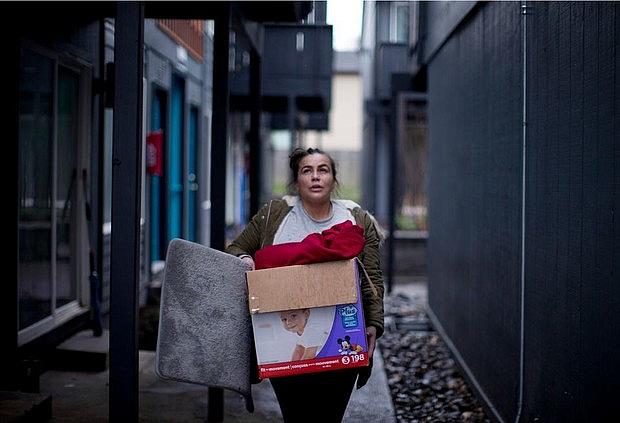
Coya Crespin moves her belongings from the apartment where she lives with her family. She received a no-cause eviction, forcing her to relocate with Titan, 18 months, and Saraia, 7. (Photo by Beth Nakamura/Staff)
Snow covered an unprepared Portland the day 18 families learned they would soon be forced out of their homes. At the Normandy Apartments, the final day of 2016 came not with revelry but a rent hike so high it was essentially an eviction.
City leaders were stunned to learn Rigler Elementary stood to watch 5 percent of its students vanish by April. But it’s a reality some educators know all too well: Children don’t pay rent, but they are paying a steep price for Portland’s failure to solve its housing crisis.
Students who are forced into new schools often lose their academic footing. They have to start all over building new relationships. Even their sense of self can suffer.
Like the snow, which iced roads to the point that hundreds of people abandoned their cars, the increasingly harsh rental climate has knocked that vulnerable, but often voiceless, segment of the “City That Works” on its heels.
In Oregon’s largest school district, more than 1,700 students in kindergarten through grade eight churned through at least three schools in the last five years alone, an analysis by The Oregonian/OregonLive shows. That’s enough students to fill the district’s biggest K-8 school —twice.
Frankie Serrano, now 17, has cycled through three high schools in less than four years, after a spike in rents at his family’s North Portland apartment complex forced them to double up with relatives in Milwaukie. Switching schools severed him from friends and mentors and has forced him and his little brother to wear the uncomfortable mantle of “new kid” multiple times.
Frankie Serrano, 17, commutes 40 minutes each way to Cleveland High School. He's willing to make the long commute to stay in his school.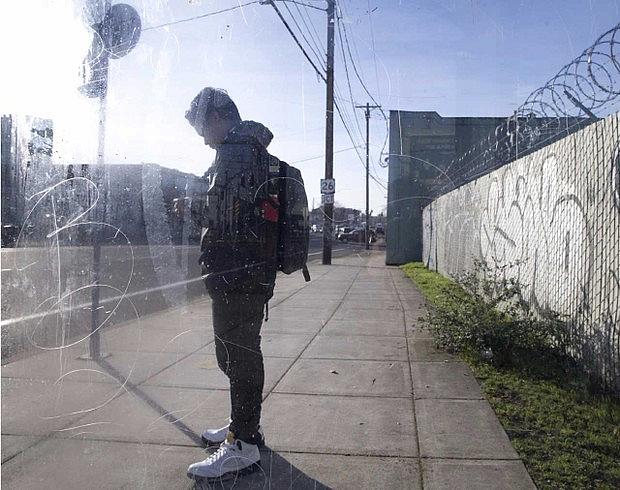
Like Frankie, James Atencio is attending his third school in a short time— and he’s only 11. His family was evicted from their apartment by new owners that wanted to remake the place and raise rents. A disability makes it challenging for the boy to control his behavior in school, but he’d made progress and spent more and more time in a regular classroom.
When his family was uprooted and he had to switch to a new school mid-year, he lost confidence. He has had to retreat to more time in a self-contained special education class in a new school district.
“It’s frustrating,” said his mom, Nina Taylor. “You want to see your kid succeed and you want them to have a stable foundation to succeed in, and when you are uprooted, it throws everything off balance.”
Second-grader Saraia Crespin has gone to class for more than a year carrying her backpack, her school books and a looming dread that she one day might not come back to her school.
Saraia’s family lived in a 72-unit North Portland complex where families were hit with mass evictions at the same time that The Normandy’s residents were pushed out. For months, the little girl stood by her mother’s side as they fought on renters’ behalf. Saraia held a bullhorn at marches, went on long car rides to Salem to talk to lawmakers and showed up at City Hall. Incredibly, the notice was rescinded.
But less than a year later, an eviction notice struck again.
Coya Crespin exits the apartment she is in the midst of packing up in order to move. She received a no-fault eviction notice and was forced to relocate with her two children, Titan and Saraia.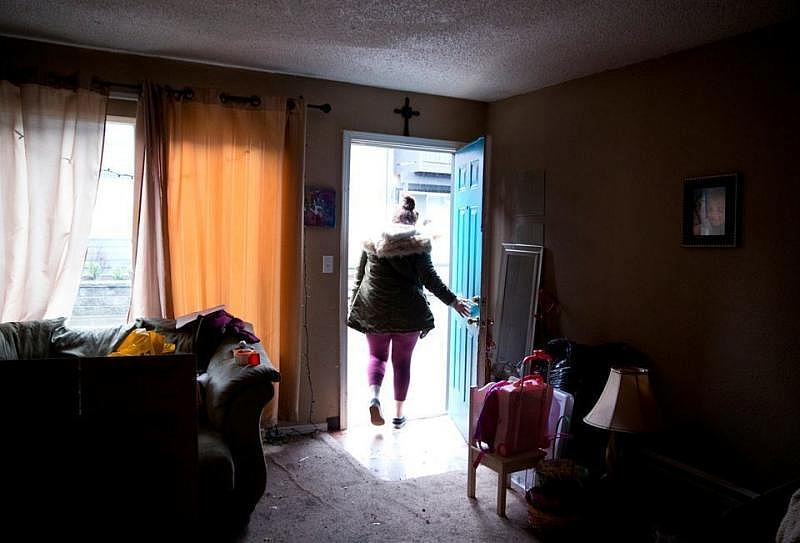
The Oregonian/OregonLive spoke to parents, children, educators, activists and social service providers to better understand the acute strain felt by children. Kids are often hit the hardest, yet have the smallest voice in Portland’s housing crisis, they said.
The newsroom also analyzed school district data to get a clear picture of the problem and which students and schools bear the brunt.
The analysis revealed the phenomenon has heavily impacted schools and families in some parts of town, while sparing others. That has exacerbated educational inequities in a district that already delivered sharply divergent results for students of different classes and races.
At Alameda Elementary in the Grant Park neighborhood and Duniway Elementary set amid green lawns near Reed College, there’s little reason to worry about how to help students whose families are suddenly forced to relocate. Homes in those neighborhoods are extremely expensive to own or rent, and prices have risen sharply. Yet for every 100 Alameda students, only two enrolled after the school year began last year and two left early, records show.
Contrast that with the situation in North Portland and on the eastern edge of the school district, along 82nd Avenue. Schools in those neighborhoods primarily serve children of color and children from low-income families. The flow of students into and out of those neighborhoods mid-school-year has unmoored many families and the educators and social service providers that try to help them.
One of every five students at César Chávez and Harrison Park schools showed up after last school year started or left before it was done. Both serve neighborhoods where more than three-fourths of children are kids of color, Chávez in St. Johns and Harrison Park are just off Southeast 82nd.
At Rosa Parks Elementary and Lane Middle School, heavily non-white schools at the district’s north and south edges, it was worse: One in four students got hit with a mid-year move. At James John Elementary, it was closer to one in three.
“There have always been kids who have moved around a lot for one reason or another, but now there are way more of them and it's almost becoming a sad new norm for a certain class of people in our city,” said Andrew Baron who runs the after-school program at Harrison Park. “The disruption that causes both at the school level and the family level is just immense.”
Baron had known Malik Logan, 12, since Malik was a shy first-grader. Baron calls him a great kid and then, with a grin, adds that Malik is one of those children who can be deeply frustrating but is deeply likeable. Baron spent years learning how Malik worked, what he needed, how to draw him out, calm him down. By last school year, Malik had made friends and built relationships with the principal, the school counselor and his teachers. Malik became a steady and eager presence in the school chess club.
But this school year Malik joined the ranks of children who disappeared.
“Where’s Malik? No one knows. Just gone,” Baron sighed. “All of that support for that kid is probably gone and no one notices. We didn’t get any call.”
When a student switches to a new school district, as Malik had done, teachers and other adults who care about his well-being lose access to records showing his grades, his attendance -- even whether he is enrolled in school at all.
Baron worried whether Malik’s new school would figure out what he needs. “Does his new school have a chess club?” he wondered.
Malik did, in fact, land at a school with chess. The trouble is, so far, he’s been too nervous to participate.
Malik Logan, 12, waits at home before heading to the bus stop.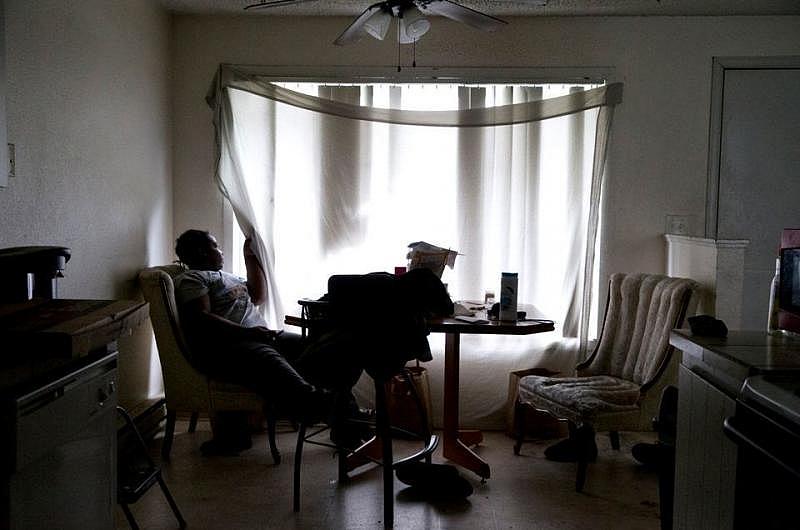
Malik’s family had been homeless, living doubled up with various friends and relatives or in hotels, for two years until they finally landed an apartment in 2015. The new place was in a different school district, David Douglas. Even so, the then 10-year-old managed to stay at Harrison Park by riding two TriMet buses to school, then home each day. But when he hit sixth grade this year, his mom decided to switch to the district where they actually live and send him to middle school.
Malik still talks about going back all the time, according to his mom. She suspects that’s why he acted out during the first few months.
It was awkward going to a new school where most kids knew each other and he knew almost no one, Malik told The Oregonian/OregonLive. He didn’t want to go back to how he’d been in those early years at Harrison Park, when he’d kept mostly to himself.
Fondly, he remembered how he grew more confident and talkative at Harrison Park. Now though, he’s back to being the unsure observer.
“Most new kids don’t really talk to other people because they don’t know them,” Malik said. “If you go to a lunch table and you really don’t know them, and everybody’s talking because they know (each other), it’s hard to really pick up a conversation.”
When you’re the new kid, everyone notices and if other students spot “something wrong with you,” he said, then they’ll start talking about you, or, worse, they’ll laugh.
Malik Logan, 12, didn't like being "the new kid" at school. He'd come out of his shell at Harrison Park School, but had to start over.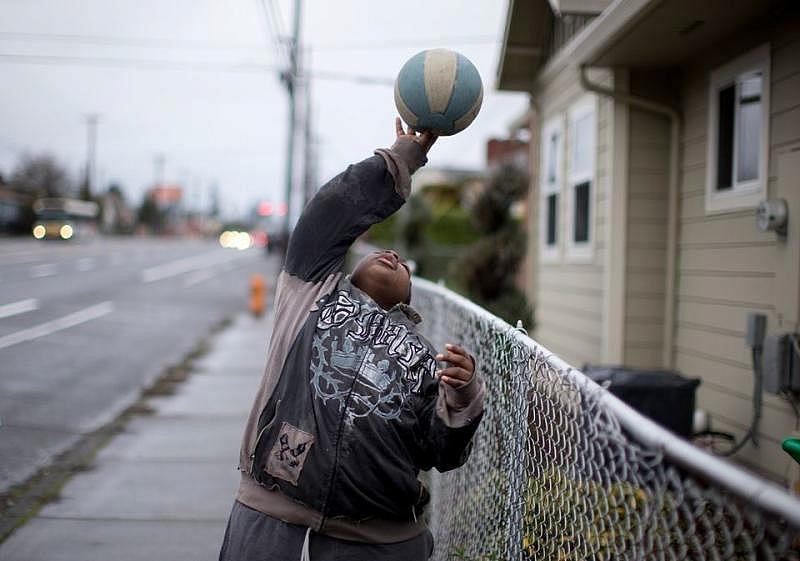
Educators meticulously strategize about wrap-around services. They launch initiatives to curb absenteeism and spend years building close bonds with children who need help coming out of their shell — but all of that hard work is washed away in a move, Baron said.
Harrison Park sees both sides of the churn: For every student who disappears like Malik did, another arrives mid-year having been pulled from another school, district records from the past five school years show. During that period, 990 of its students made a mid-year move: 428 who left before the school year was up, 444 who arrived once the school year was underway and 118 more who did both, staying at Harrison Park for only a few months or even a few days.
Other Portland schools have similar or worse rates of disruption for students. At George Middle School in North Portland and Vestal K-8 on Northeast 82nd Avenue, for every 10 students enrolled last year, 2.7 students showed up after the school year started or left before the year was up. That matched the churn rate at Harrison Park.
At five other high-poverty, high-minority schools -- all near the city’s edges, in North or far Southeast Portland -- the streams in and out were even more intense.
At Harrison Park, Baron knows one student who worried he was on the verge of moving for two years. Living with that constant instability takes a toll.
Children who transfer in mid-year can be disengaged and checked out, jaded by constant change, Baron said. It can be hard to convince those students to make an effort when their attitude is that it isn’t worth it because they’ll be gone again soon. The sad thing is, he said, sometimes they’re right and those children leave as quickly as they came.
Outside the cafeteria window, Baron can see a housing complex many of his students depend on. In recent years, the Asian Pacific American Network of Oregon intervened on behalf of 12 families there that were facing a rent hike and worked with the landlord to help them stay.
Odds are against Portland families who rent: The average rental household in Portland can’t afford even a one-bedroom apartment in the city, according to an analysis last year by the National Low Income Housing Coalition. In arriving at its conclusions, the group applied the standard threshold that a family should spend no more than 30 percent of its income on rent. There just aren’t enough places to live that working families can afford.
Mold was an ongoing problem in Coya Crespin's children's bedroom. Complaints to the landlord didn't work. Her children, Saraia and Titan, eventually abandoned the room, choosing instead to sleep with their mother. The family was no-cause evicted from the complex and moved in February.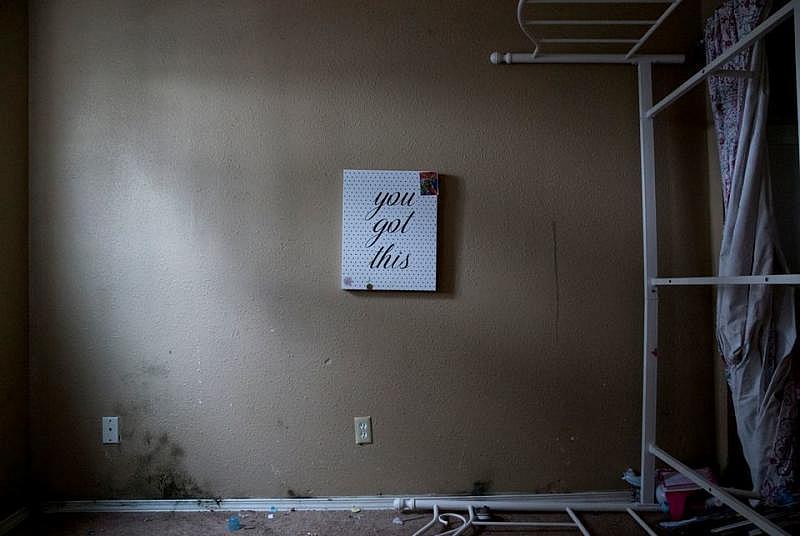
Mayor Ted Wheeler agrees that problem needs to be fixed. Half of the 1,300 apartments built or preserved using a $283 million voter-approved housing bond will have two or more bedrooms, enough for families with children, he said.
He and the rest of the City Council also plan to make permanent a requirement that landlords pay ousted tenants thousands of dollars to help them relocate. The rule doesn’t apply to landlords who own only one apartment, but he and the council plan to change that, he said.
If the changes in the renter protection rule go through, Wheeler said, “we can help stabilize families in their homes.
“Displacement has a number of negative social consequences,” he said “and among the worst is that an unplanned move hurts a child’s success in school.”
Although Wheeler and the rest of the City Council have declared affordable housing a top priority, however, they have only arranged for the city’s housing bureau to complete 283 affordable apartments this year.
In the meantime, schools are called upon to shoulder demands from hundreds of families in survival-mode, reeling from a rent hike or eviction and with children bearing the effects.
Yet schools tend to be passive actors in the housing crisis. Portland Public Schools doesn’t have a system to help families find new apartments in the same school attendance zone. It has no say over renters’ rights. It doesn’t even have a formalized approach to helping teachers and counselors in one school make a helpful hand-off to their counterparts in another when one of their students moves mid-year.
All those factors impede the district’s main objective: Ensuring Portland children learn.

It’s not that school employees aren’t moved to take action when they see students affected by Portland’s high and rising rents. School staffers call housing hotlines if they learn a family is in crisis. Teachers turned out en masse at a march against The Normandy rent hikes, a showing that helped prompt the landlord to delay the price hike.
Federal funding intended to assist homeless students means district employees are trained to identify and help ensure homeless students have equal access to a public education. But no one has suggested the district create a formal strategy for schools to proactively help families dealing with rising rents.
Portland Superintendent Guadalupe Guerrero said the best the school district can do is offer students a consistent and dependable learning experience.
“It's tough. I don’t know what a given teacher or school principal might be able to do to influence the housing market in their surrounding community,” he said. “But they certainly feel it.
"Certainly we can do a lot to make sure the teaching and learning experience is powerful, but there are a lot of other factors that you can't ignore and pretend aren't there, and that is housing and medical and everything else. We take everyone who walks in the door, and the issues they bring with them are real."
On Portland’s West Side and most close-in Eastside neighborhoods, there is no sweeping sense that a systemic fix is needed. Entire apartment complexes aren’t being emptied suddenly. Mid-year arrivals and departures are relatively rare. A student is eight times more likely to be upended mid-year at North Portland’s highest churn elementary schools, Rosa Parks and James John, than a child at Alameda.
That puts extra demands on North Portland educators. “It does affect attendance, our test scores, everything,” said Angel Humphrey, who teaches gym at César Chávez K-8 School, surrounded by apartments hit with evictions or rising rents. “You’re dealing with a heartbroken kid who is just scared and I would be too, I’m like, ‘I’m scared for you and I don’t even know what I can do.’”
When the rent increase loomed at The Normandy, it was the school community that sounded the alarm.
Eric Ku-Castillo, 7, a student at Rigler Elementary School, watches cartoons after school inside his family's home at The Normandy Apartments in January 2017. His family, along with several others, received a 100 percent rent increase.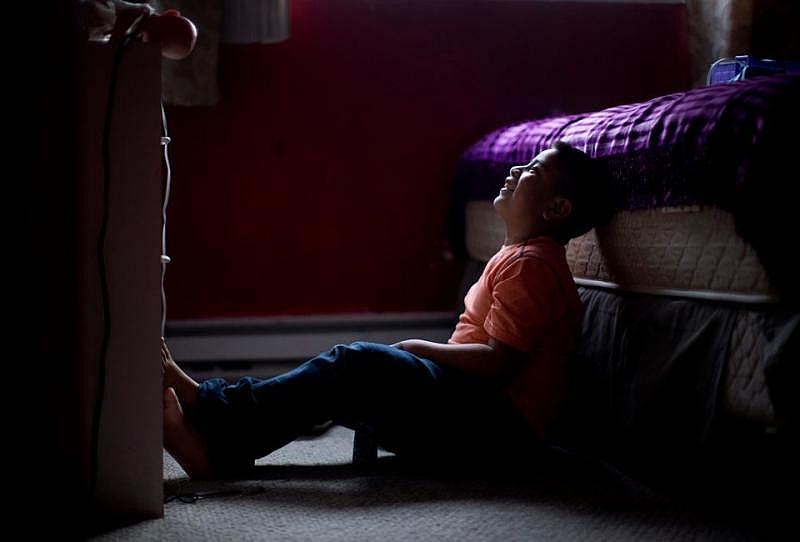
“We wouldn’t have even known the situation was unfolding if it weren’t for the teachers and administrators and the parents at Rigler reaching out to us,” said Cameron Herrington, the anti-displacement coordinator with the neighborhood group Living Cully. "The whole school community was so supportive and engaged in the campaign."
Hundreds of people marched in the streets to protest. In both cases, the activism had impact.
Government officials in Portland noticed. Multnomah County’s human services department took the unusual step of offering to pay rent for Normandy families through the end of the school year.
Parents who faced a forced move went to City Hall and provided critical testimony ahead of a vote to pass a rule requiring landlords to provide relocation money if they either increase rent by at least 10 percent or issue a no-cause eviction.
The ordinance passed unanimously, and on Wednesday, the city council will consider expanding the renter protection rule.
The families at The Normandy were some of the first to take advantage of that assistance, Herrington pointed out. In the end, he said, the landlord delayed the move-out date so the children could finish the school year. The county’s money was freed up for another cause.
Still, even with all that momentum, the outcome was frustrating for many. More than half of the 26 children affected by the rent increase had to leave Rigler, where a vibrant Spanish immersion program and largely bilingual staff bolstered their language skills and made their families feel welcome. The odds that those native Spanish-speakers landed at another school with an immersion program are slim.
“It was extremely discouraging that almost all the families had to move” out of The Normandy, Herrington said. "We need to view education and health as part of the rationale for why access to stable affordable housing is important.”
Students heads into Rigler Elementary School in Portland.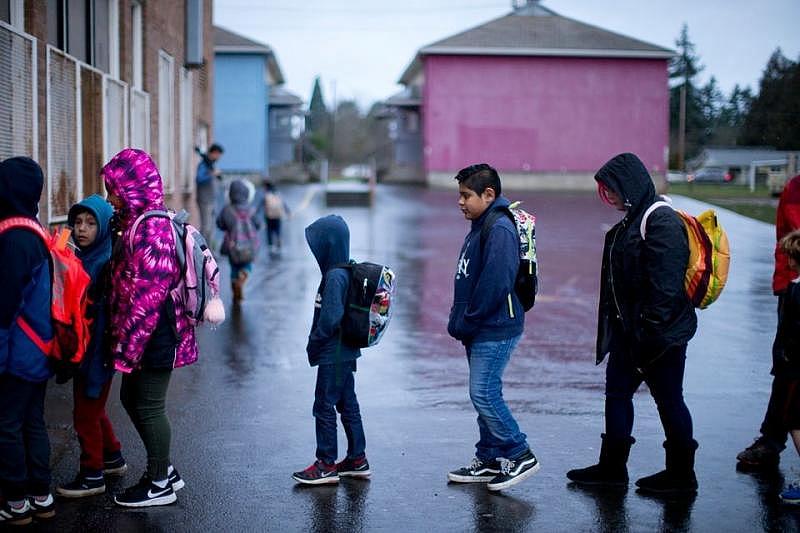
Daisy Fuentes’ mom and dad tried hard to keep her at Rigler. Her mom, Fidelina Sanchez, volunteered often at the school and loved feeling involved in her daughter’s education.
When the rent hike struck, she went with her neighbors to City Hall and also took the streets to protest, kids in tow. She hadn’t expected the landlord to completely undo the price increase but had hoped it could be phased in gradually, giving the family time to adjust. The landlord, who had recently purchased the complex, has said the rent hike was necessary to recoup the substantial costs of renovating a run-down complex. The owner also noted that the rising rent was in line with market rates.
So the family found another apartment, this one outside the school zone. It wasn’t ideal but it was workable. Daisy’s dad could drive her to Rigler, where she was finishing kindergarten, on his way to his job. Her mom could take the bus to pick Daisy up from school.
But there was a problem. The apartment was on the second floor and their downstairs neighbor complained about the sound of the children’s feet. There was no way to make Daisy, 7, and her 1-year-old brother step softly all day long.
So they tried again to find an apartment that would allow them to stay at Rigler or at least near by. They scoured the Internet for apartments and cased neighborhoods, hopping out of the car and knocking on any door with a “For Rent” sign out front.
Nothing panned out. Instead, they moved 11 miles further south and east, to the Centennial School District. Daisy’s parents agonized over how to tell her she wouldn’t go back to Rigler for first grade.
Her new school, Meadows Elementary, has no immersion program and almost no adults who speak Spanish. Sanchez hasn’t been able to volunteer because of the language barrier and it’s difficult to even get information about how her daughter is doing. Before, it was easy to help Daisy with her homework. Now she struggles to even understand what an assignment asks.
At the start of the school year, Daisy begged to stay home most days. She missed her friends and her teachers and didn’t like that her new school was only in English. At the end of kindergarten, Daisy had become a proficient reader, her mom said, but since the move, it feels like her progress has washed away.
“You feel a sense of grief. You feel helpless because it feels like you can’t do anything,” Sanchez said. “The landlords aren’t the ones that have to find a new school.”

